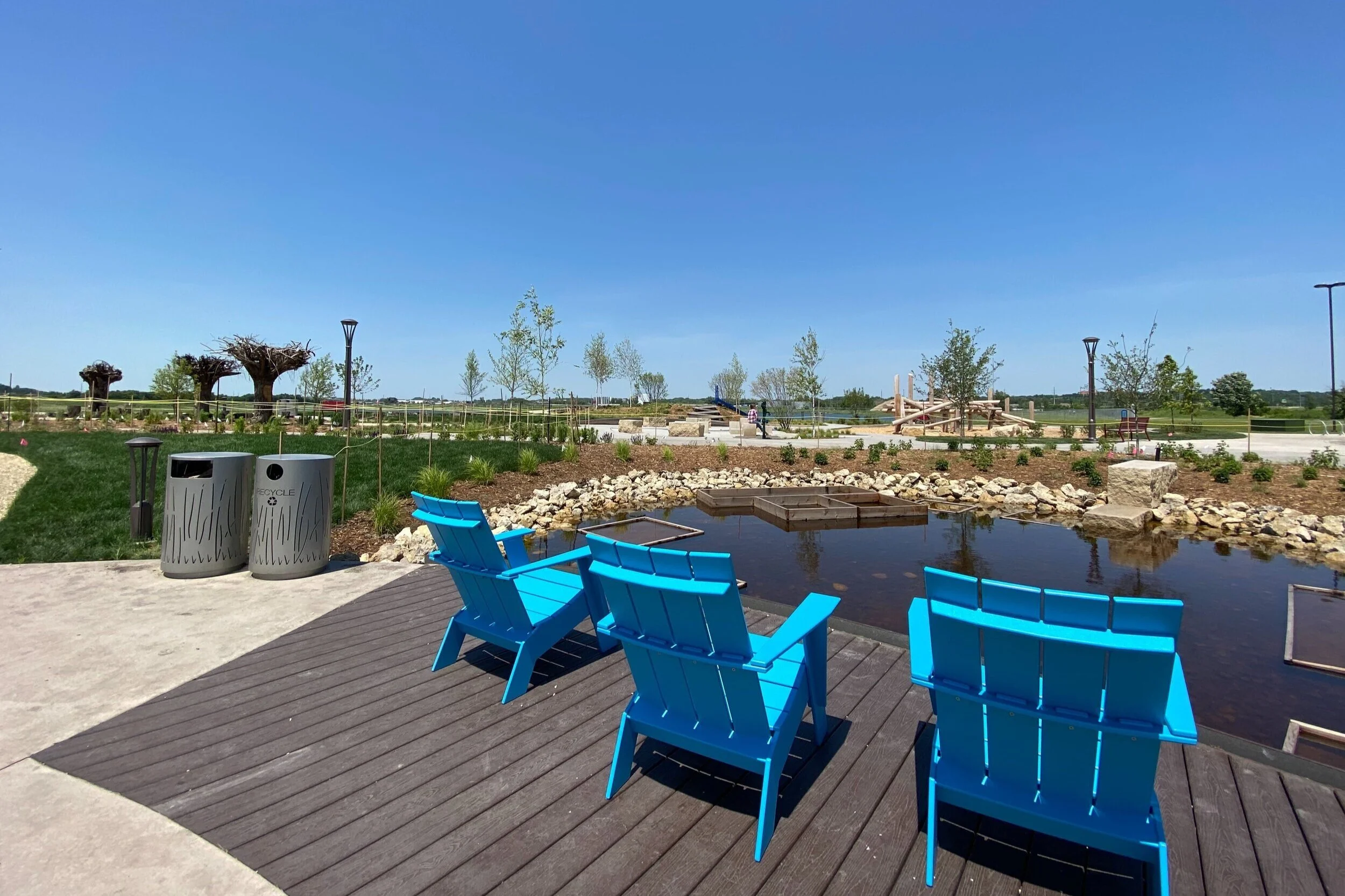Where did Rochester's lakes come from? Let’s dive in.
Rochester’s lakes all share one trait: their unnaturalness.
Flood control reservoirs, stormwater ponds, and aggregate lakes created by mining operations make up much of the city’s aquatic recreation. This means Rochester’s system of swimming beaches, fishing holes, and paddling waters are, for the most part, byproducts of industry, topography, and civic planning.
Silver Lake
Having a lake in town was a desire from the city’s founding in 1854. The current site of Silver Lake was an early frontrunner, but was opposed by William Worrall Mayo, who worried about State Hospital sewage in the Silver Creek (and also wanted the city’s lake to be built by his farm).
The land was originally a combination of sand and gravel pits, pasture land, and marshy land. It was also the site of Cole’s Mill, an important landmark where Rochester settlers and Native Americans crossed paths.
“In the 1850s when they wrote the early histories of Rochester, they talked about Native Americans camping across from Cole’s Mill. There was a sickness that went through there, and they buried those who died up on Indian Heights,” says Sean Kettelkamp, researcher for The History Center of Olmsted County.
Silver Lake’s pool, skatepark, and the 7th Street bridge now stand where those camping grounds were believed to be.
Silver Lake’s creation began in the early 1930s, with workers hand-digging the initial basin. As the Great Depression wore on, Silver Lake became a Works Progress Administration project employing 400 men at $22 a month. A dam was built between 1935 and 1936 for a half million dollars. Dirt from the project went to reshape other parks around town, and, according to the 2013 Water Primer, sand from Silver Lake helped build the Kahler Hotel.
Silver Lake area, circa 1930 / Courtesy History Center of Olmsted County (HCOC)
Ten years later, the power plant opened and kept a steady flush of warm water coming into the lake. This brought the geese, who have made the lake a permanent home.
Most of the other ‘lakes’ in the city (the definition of lake is flexible in this state) are a credit to Rochester’s valley-esque topography, which also features creeks and streams. Over millions of years, enormous sand and gravel deposits developed in the aquifer region, so when a pit is dug, groundwater feeds the new ponds.
These pit-ponds developed ad-hoc, and often without permits, for decades. According to Mike Nigbur, Park & Forestry Division Head of the Rochester Parks Department, the mining operation that led to Cascade Lake began in the 1960s, initially without any permits. It became a fishing hole long before it became a park.
The Flood
In the aftermath of the calamitous flood of 1978, the city and county teamed up with Olmsted Soil and Water Conservation District, Corps of Engineers, and Natural Resource Conservation Service to build a flood protection project. Between 1984 and 1995, seven dams were built around the city, creating upstream reservoirs which prevent flooding by controlling water surges into the storm sewer system.
Both Chester Woods and Foster Arend were marked as potential recreation sites prior to the project.
Rochester purchased the land of Foster Arend in 1981 and opened the park in 1985, complete with a beach, fishing pier, and a DNR-stocked pond.
Jeff Minske, owner and operator of Minske Bait, Tackle, and Custom Rods, 1117 N Broadway Ave, has fished Rochester for 60 years. He grew up fishing the Cascade quarry, as well as the Zumbro River, and a pair of ponds behind where the Rec Center now stands
Map courtesy MN DNR
“Those seven reservoirs that have changed bank fishing in Rochester forever,” says Minske. “It's really giving a lot of people the opportunity to fish close that otherwise wouldn't have that opportunity.”
Minske hears a lot in his shop; tales of 40 inch Northerns in the Silver Creek Reservoir; a 40 lb. catfish from Foster Arend; rumored Pike at Chester Woods.
But the reservoirs aren’t the only places producing fish.
Jeff Ellerbusch, Analysis, Planning & Policy Supervisor at Olmsted County, recalls fishing for sunfish with his son at Northern Hills Golf Course, and says that some of the city’s newest ponds, on the north side of the Main Street Shopping Center along 40th street SE, have already attracted fishers.
Access to some of these ponds is touchy, however; only waters connected to a stream are considered public in Rochester. Cascade Creek, for example, runs into Cascade Lake, but Lake George and Salem Lake are private.
But Why are there Fish in the Gravel Pits?
For some lakes, the answer is simple: the DNR stocked them. Brian Beyerl, Fisheries Specialist for the Fisheries and Wildlife Division of the Minnesota Department of Natural Resources, says the DNR stocked several reservoirs throughout the city with naturally reproducing species.
Other fish make their way into unlikely bodies of water ‘naturally.’ In the 70s and 80s, the Zumbro River flooded into Foster Arend and a gravel pit north of it, bringing new fish into the isolated waters. Recently, Cascade Creek overtopped its banks into Cascade Lake, almost certainly bringing new fish.
As for fish arriving in gravel pits unaffected by high rivers?
The popular answer is water fowl.
“It would have to be the perfect scenario for that to happen and I highly doubt that would happen,” says Beyerl. Some plants, like sago pondweed, can transfer things via waterfowl, but those instances are rare.
According to Ellerbusch, at one old sand and gravel pit, a person stocked the ‘lake’ with northerns and bass. No one knew about it until they snuck in and started catching fish.
Other ponds, like in the Salem Creek area, secured permits to stock their ponds.
The lake by Whistle Binkies South has geothermal energy pipes - black hoses that run underwater and help heat buildings nearby.
“We're from a county without a natural lake. We have reservoirs and we have these things that are basically groundwater stormwater collection areas. That's just the uniqueness of Olmsted County,” says Ellerbusch.
For more information about Rochester’s water situation, we recommend the following resources: The Minnesota DNR 's lake finder page; Olmsted County’s GIS app; the 2013 Rochester Water Primer.
Bryan Lund is a Rochester-based writer and regular contributor to Med City Beat.
Cover photo: Construction of the Silver Lake dam, circa 1936 / Courtesy HCOC










